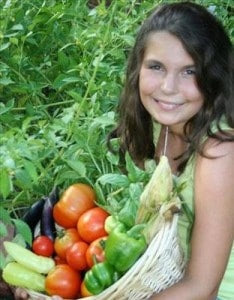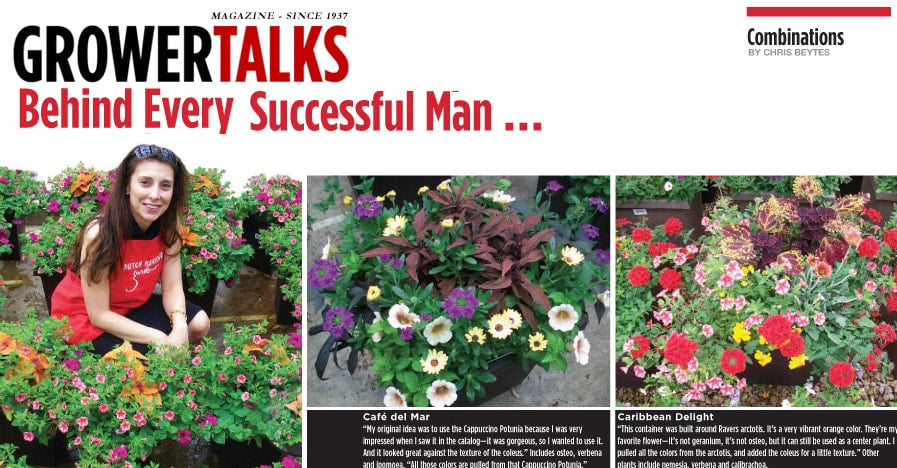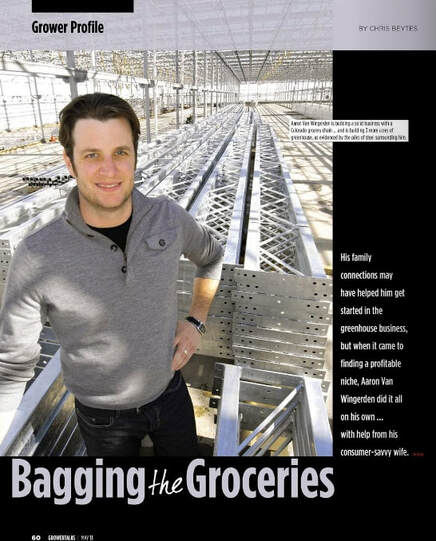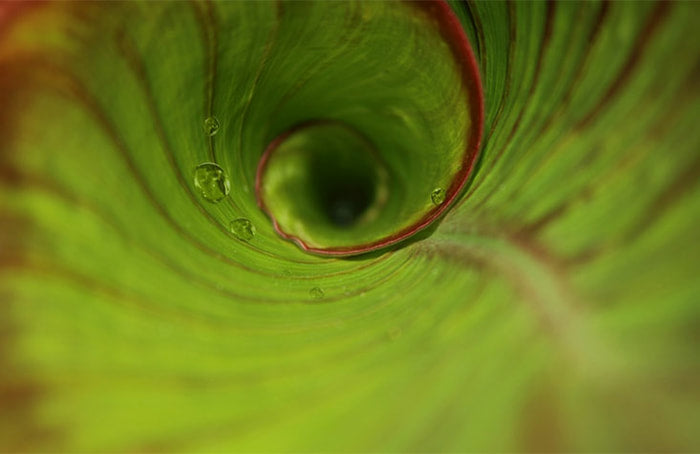CURRENT NEWS
-
Dutch Heritage Garden’s Head Grower Brian Austin voted one of GPN’s 40 under 40.

-
Dutch Heritage Garden’s owner Van Wingerden voted one of GPN’s 40 under 40. He is helping shape the industry.

-

Inspiring Young Gardener Feeds the Hungry
At a time when many people are concerned about the younger generation’s interest in eating vegetables, let alone growing them, it’s heart-warming to hear a story about a young person who’s gardening in earnest and changing lives at the same time.
Read More
Meet Katie Stagliano, 13, founder of Katie’s Krops in Summerville, South Carolina. She’s growing vegetables to feed the hungry and is inspiring other young gardeners while she’s at it.Back in 2008, when Katie was just 9 years old, she brought home a small cabbage plant as part of Bonnie Plants’ 3rd Grade Cabbage Program. After carefully tending to her plant all summer, she had grown an impressive 40 pound cabbage. She donated the cabbage to a local soup kitchen, where it helped feed over 275 people. This experience inspired Katie to grow more vegetables to help feed people in need.
Fast forward almost four years. Katie is now an articulate teenager with a thriving non-profit organization that manages nearly 20 gardens to help feed the hungry through local shelters and soup kitchens. “I want more people to get involved, more people to help in the fight against hunger,” says Katie. “Growing vegetables is fun and it’s so great to help people. If I can do it, anyone can.”
Katie’s new goal is to have a Katie’s Krops garden in all 50 states. To help her mission, she’s started a grant program with the help of Opal Apple to offer grants to kids ages 9 to 16 to start vegetable gardens and donate their bounty to those in need.
Katie’s veggie gardening is earning widespread media coverage, including appearances on the Disney Channel, CNN, Everyday Health on ABC, and the Nate Berkus Show. The green industry is also pitching in to support Katie’s mission. After reading about Katie’s Krops in a Lowe’s Creative Ideas Magazine, Aaron Van Wingerden, owner of Dutch Heritage Gardens in Larkspur, Colorado, pitched in to help Katie’s dream of having a greenhouse come true. Van Wingerden shipped a 48-ft greenhouse from Colorado to South Carolina and then flew there himself to help Katie and her family construct the greenhouse at one of her garden sites. He also donated a variety of growing supplies, including 12 pallets of Mojo potting soil.
Help support Katie Krops or consider supporting other programs in your region that help to inspire young gardeners. -

Growertalks Magazine June, 2011Behind Every Successful Man…
In May, we featured the story of Aaron Van Wingerden and Dutch Heritage Gardens (see article below), and how he and his wife, Rozalia, have gone from zero to $5 million in five years in large part on the strength of Rozalia’s container designs.
Read MoreWhen they started, combos were only about 5% of their mix. Today, it’s 40%. Because they didn’t have any containers planted during our February visit, we couldn’t show any of her designs. This month, we rectify that. Here are 9 of Rozalia’s combos, complete with her descriptions of the design and inspiration.
-

Growertalks Magazine May, 2011A Grower Profile
There’s something to be said for youthful energy and blissful ignorance. In the case of Aaron Van Wingerden, the combination has allowed him to grow Dutch Heritage Gardens into a $5 million greenhouse business in just five years—and at a time in history when many established floriculture businesses are struggling and even failing. What’s his secret—beyond boundless energy and not knowing what’s not possible, that is?
Read More“We based our entire business model on impulse-buying,” Aaron explained as we sat in his Larskspur, Colorado, office. Aaron is a tall, affable 28-year-old who grew up the second-eldest son of Arie Van Wingerden, founder of Cherry Creek Systems (Originally East Coast Designs). A young family man, Aaron and his wife, Rozalia, have two sons (one just born April 9). There’s a toy-strewn play area in the corner of his office. A meowing cat strolls in looking for attention, then leaves.“My generation is ‘do it for me’,” Aaron continues. “They’re not going to get their hands dirty. They don’t want to dig in the dirt. They want something they can put on their porch and it looks great for the barbecue they’re having that weekend. Come home and it’s done. They don’thave to think about it.”Based on this knowledge of what drives his generation, Aaron has developed a business model providing higher-end mixed containers primarily to 120 King Soopers grocery stores in Colorado. He also has his foot in the door with warehouse club Costco. Between these two key customers, he forecasts sales of $5 million in 2011. He’s even adding 50% more greenhouse space to keep up with the demand.Apparently, Aaron doesn’t know that business today is tough.A LIFE OF EXPERIENCEDespite his youth, it’s unfair to call Aaron “blissfully ignorant,” given his background. He grew up in the family greenhouse business in Pipersville, Pennsylvania, and was blessed with a dozen uncles who own large greenhouses. When Aaron was 13, Arie sold the greenhouse and moved the family to an 800-acre plateau in Larkspur, Colorado. Arie renamed East Coast Designs Cherry Creek Systems, and continued manufacturing boom irrigation and ECHO overhead hanging basket systems.A few years into “retirement” from growing, Arie decided to build a greenhouse. Aaron thinks it was a combination of his dad being bored, plus wanting his kids to have somethingto do after a day of homeschooling*. Aaron and his brothers spent the summer learning to pour concrete and erect steel and glass.Arie started out growing young vegetable plants for a local hydroponic range, as well as bedding plants, and got involved as a partner with several greenhouse projects, eventually helping found Rocky Mountain Growers. Aaron worked in the Larkspur greenhouse from its beginning, moving up the ranks from night shift supervisor and section grower to production manager and ultimately general manager of Rocky Mountain Growers.But working for an opinionated Dutch father isn’t always the easiest career path … especially when you yourself are Dutch and opinionated. Aaron had a rift with his father, and in early 2004, at the age of 21, he left Colorado to work for Ulery Greenhouse Company in Springfield, Ohio, accompanied by his girlfriend, Rozalia, a bright young Bulgarian with dual majors in horticulture and economics, whom he met when she was interning at Rocky Mountain (she got a position with Ulery’s merchandising team).The move east was fortuitous: It gave him a view of how other greenhouse businesses operate. And it gave him a chance to prove himself in a non-family business. In fact, he was successful enough at Ulery that they offered him a small partnership deal.Jump ahead a year, to 2005. At their wedding in Bulgaria, Aaron and his father mended fences. Arie offered to sell Aaron the 6-acregreenhouse in Larkspur, which was now empty. But Aaron wasn’t sure he wanted to move back to Colorado. Plus, he had a good gig with Ulery.“But I had always wanted to buy my own place,” he says. So he began exploring his options. Two of his uncles had ownership in operations that they were willing to sell (in Maine and Arkansas). Aaron visited both, but didn’t like either location. Colorado was home, so he and Rozalia agreed to buy the Larkspur greenhouse from his dad. That was June of 2006.“It was just a shell of a company,” Aaron recalls. “No infrastructure, no sales, no inventory, nothing.” But it was a quality Venlo glass greenhouse with 14-ft. gutters, a soil mixer, boom irrigation and ECHOs.BAGGING THE GROCERIESBack to impulse buying. Along with contract growing some young tomato plants and poinsettias, Aaron spent his first summer growing samples of mixed containers using a wide variety of unusual pots and plants. He took the samples to every grocery store and garden center in the region. “We immediately thought grocery stores,” Aaron says. “I mean why not? They have a small presence (in plants). But the foot traffic is already there. Impulse purchases are what we can offer. Customers will walk in and say, ‘I don’t ever see that at Home Depot. I’m going to buy it.’ Instant, throw it in the buggy. That was our motto going in, and I thought that was how we could get our foot in the door and blow the competition out of the water.”King Soopers was the first to sign on.“The buyer came out, saw what we were doing, liked it, and gave us an order for about a million bucks for next spring,” Aaron recalls. “Then we got hooked up with Albertson’s as well—they gave us an order for $500,000 to $600,000. And that’s kind of how we got started.” But it was the message of eye-catching, sophisticated products geared to inspire impulse sales that hooked the buyers.“When you go into a grocery store, you’re looking to buy milk and bread, not flowers,” Aaron explains. “The model that we approached both of these grocery chains with, they really caught on to it. We immediately started offering higher end containers. Combinations, instant [color]. My wife has a really good eye for color coordination, what goes well with what. She doesn’t just think ‘thrillers, fillers, spillers.’ She’s really good. I mean, some of the combos out there are just WOW.”As a female consumer herself, Rozalia is aptly equipped to relate to the young King Soopers shopper. “In my opinion, she does combos that nobody would ever think of,” Aaron says of his wife. “She’s got vision that I don’t have. Obviously, 80% of the customers who buy plants are women. She’s got the vision of what women want. She works very closely with how the combination looks, what the tag verbiage is, what combo should go in what size container… she’s got a very sophisticated eye. And obviously, the growth of the business wouldn’t have happened without her.”LOYALTY PAYSLike some other growers, Aaron began using Garden Mart temporary retail greenhouses to help his grocery customers merchandise product in front of their stores. He started with Albertson’s; unfortunately, Albertson’s decided to stock competitors’ products in Aaron’shouses, so he ended that relationship (“It was principle.”). When he told King Soopers of his break with Albertson’s, they picked up the slack, helping him sell the product that Albertson’s left behind; in return, they saw their own sales increase 15% to 20% that season. “That definitely was providence, to increase our sales with them exponentially,” Aaron says. “And every year from then on we’ve gone almost through Labor Day with bedding plants. So it worked out!”Now King Soopers is using Garden Marts at 35 of their stores, and seeing same-store sales increases of 300% or more. The goal is to put one at every store, but zoning and other issues prevent that right now. “We’re figuring ways.”GROWTH PLANSLeave Aaron’s office and walk through the 6-acre greenhouse, and you reach the spot where he’s putting up another 3 acres of glass. Part of the new construction is to meet existing demand (he rented 2 acres last year) and part is for anticipated demand from their newest customer, Costco. They started with poinsettias on contract for another grower, then a small order for summer product. And Aaron was willing to deliver to remote stores in Nevada and Utah, “paying his dues.” This spring his product will be in stores a bit earlier at Father’s Day, June and July. “Hopefully, it all grows from there.”Grows? Considering his last name, we had to ask, how big?“Being a Van Wingerden, I want to expand a little bit,” Aaron admitted. “I don’t think I’ll ever want a 40-acre facility, but I would like 12 to 15 acres. The reason being, once you get beyond a certain size, you have to start managing differently. You have to become a manager, and you can’t go out there and get your hands dirty. And I still want to have fun.”And the business name? Where did that come from?“Obviously, my Dutch heritage,” Aaron answered. “And ‘Gardens’ sounded—and this is coming from my wife— sounded more sophisticated than the ‘Growers’ or ‘Farms’ that everyone else was doing. It just had a nice ring to it. We were thinking, ‘Your garden ain’t much unless it’s got some Dutch in it.’” GT




